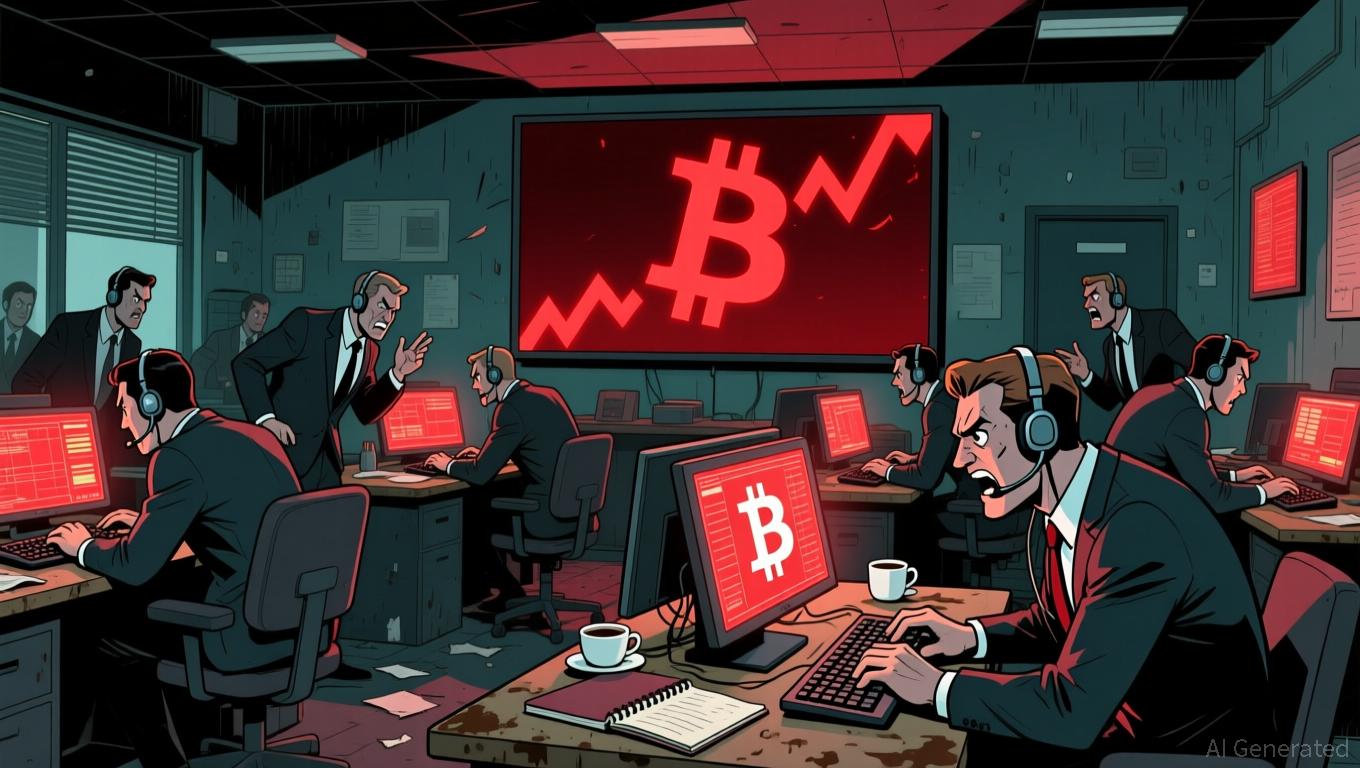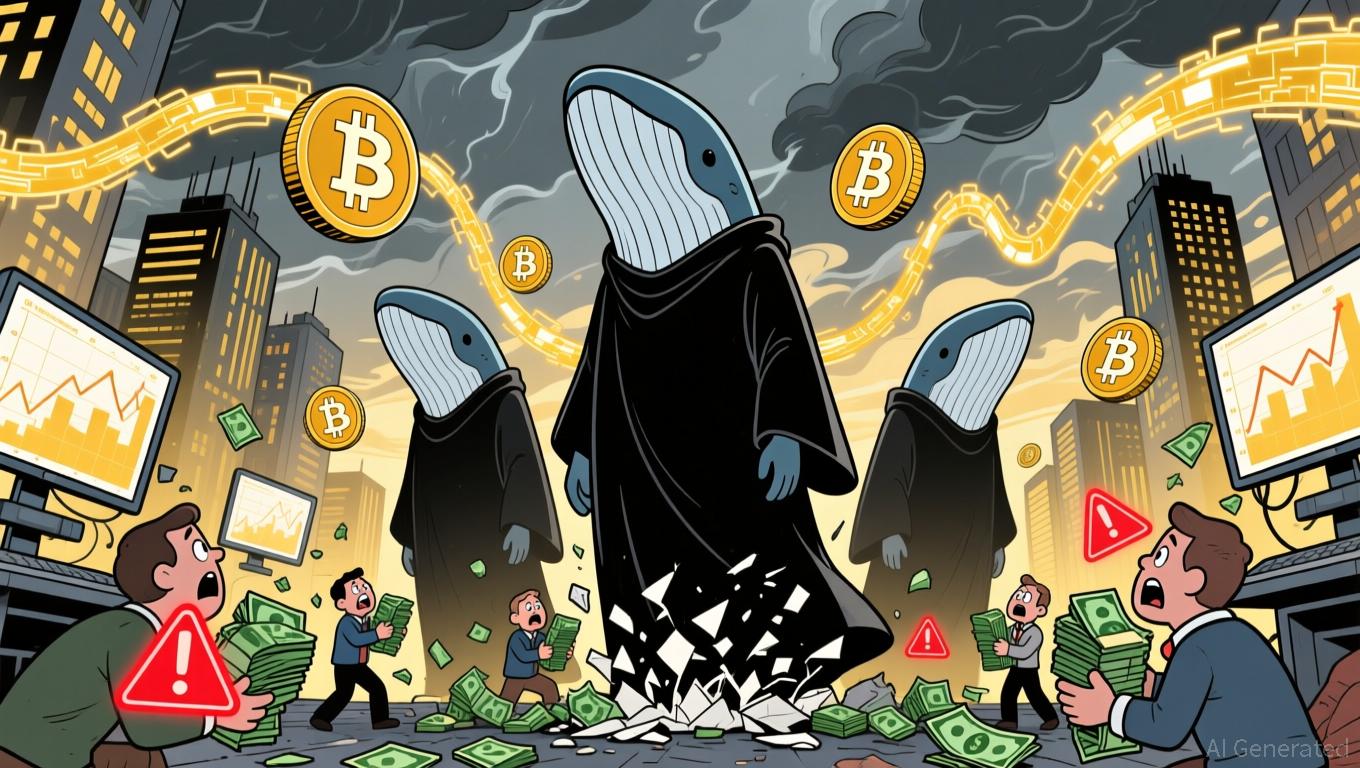Bitcoin Updates Today: Is Crypto’s Intense Fear Signaling a Market Bottom or Just a Misleading Decline?
- Crypto Fear & Greed Index fell to 24, with Bitcoin consolidating between $103,000-$115,000 amid prolonged market anxiety. - Extended fear periods historically precede market bottoms, but traders warn the index often lags and misfires in volatile conditions. - Coinbase aims to stabilize markets with 24/7 altcoin futures, yet regulatory clarity and persistent ETF outflows remain critical factors.
The crypto Fear & Greed Index has dropped to 24, its lowest point in a week, highlighting ongoing market unease as
Recent developments have intensified these concerns. On November 21, 2025, the crypto market saw $1.5 trillion wiped out, with Bitcoin plunging to $87,000 amid a wave of unexplained liquidations

The current deep pessimism reflected by the Fear & Greed Index has drawn parallels to previous market bottoms, such as the March 2025 low of 13, which
Amid these challenges, Coinbase is seeking to establish itself as a source of stability. The exchange
Clearer regulations and innovative products could help trigger a turnaround. Historically, extended periods of fear have aligned with seller fatigue, suggesting the current sideways movement might end with a recovery. However, with the market still shaken from November’s crash and ongoing outflows from altcoin ETFs, investors are urged to remain cautious
Disclaimer: The content of this article solely reflects the author's opinion and does not represent the platform in any capacity. This article is not intended to serve as a reference for making investment decisions.
You may also like
Bitcoin News Today: Bitcoin Drops to $80k—Is This a Sign of Market Recovery or the Start of a Steeper Decline?
- Bitcoin fell to $80,500 in November 2025, sparking debate over market bottom signals amid mixed technical indicators and whale resilience. - On-chain data shows miners and long-term holders avoid selling, while retail sell-offs and Fed policy uncertainty complicate recovery prospects. - Geopolitical tensions and crypto-linked sanctions evasion amplify volatility, contrasting with institutional participation via leveraged ETFs and transparency tools. - Analysts remain divided: some highlight historical pa

The Rapid Rise of ZK Tech Stocks: Could This Signal the Dawn of a New Era?
- ZK technology stocks surged amid institutional adoption and quantum threat concerns, despite no recent regulatory updates or protocol announcements. - Institutional demand for privacy-preserving infrastructure grew, highlighted by Coinbase's security-focused wallet migration and post-quantum readiness discussions. - Market momentum reflects anticipation of future ZK protocol upgrades and cross-sector innovation, though regulatory ambiguity creates both risks and opportunities. - Analysts debate whether t
Astar 2.0: The Next Generation of DeFi Infrastructure
- Astar 2.0, a next-gen DeFi platform, leverages hybrid AMM-CEX models and AI-driven tools to enhance cross-chain liquidity and smart contract security. - The platform achieved $1.399B TVL and $27.7B daily volume in Q3 2025, with strategic partnerships and integrations across BNB Chain, Ethereum , and Solana . - AI-enhanced auditing modules and EVM compatibility address 89% of DeFi contract vulnerabilities, driving 20% QoQ growth in institutional wallet adoption. - Tokenomics 3.0 caps ASTR supply at 10.5B
Vitalik Buterin Backs ZKsync: Accelerating Ethereum’s Expansion and Advancing Layer 2 Solutions
- Vitalik Buterin endorses ZKsync's Atlas upgrade, highlighting 15,000 TPS, $0.01 fees, and bridging Ethereum's Layer 1/2 liquidity. - ZK Stack innovation reduces capital fragmentation while Airbender prover enables 2-GPU L1 block proofs, advancing Ethereum's scalability. - ZKsync now holds 15% Layer 2 TVL with 50% ZK token surge, but faces 60x performance gaps and competition from Arbitrum/Optimism. - Upcoming Fusaka upgrade targets 30,000 TPS by December 2025, while Kohaku privacy framework addresses ado